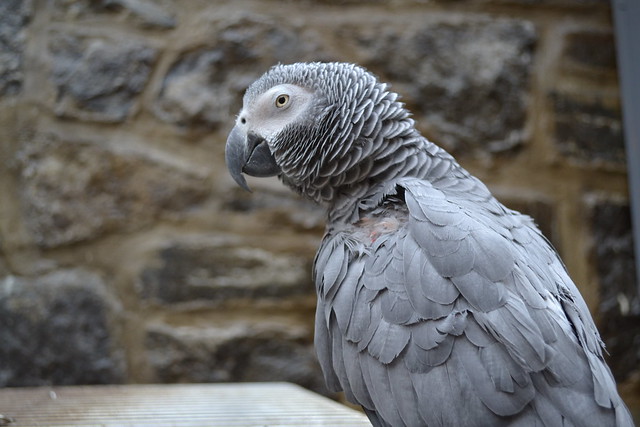The Orion nebula is featured in this sweeping image from NASA's Wide-field Infrared Survey Explorer, or WISE. The constellation of Orion is prominent in the evening sky throughout the world from about December through April of each year. The nebula (also cataloged as Messier 42) is located in the sword of Orion, hanging from his famous belt of three stars. The star cluster embedded in the nebula is visible to the unaided human eye as a single star, with some fuzziness apparent to the most keen-eyed observers. Because of its prominence, cultures all around the world have given special significance to Orion. The Maya of Mesoamerica envision the lower portion of Orion, his belt and feet (the stars Saiph and Rigel), as being the hearthstones of creation, similar to the triangular three-stone hearth that is at the center of all traditional Maya homes. The Orion nebula, lying at the center of the triangle, is interpreted by the Maya as the cosmic fire of creation surrounded by smoke. This metaphor of a cosmic fire of creation is apt. The Orion nebula is an enormous cloud of dust and gas where vast numbers of new stars are being forged. It is one of the closest sites of star formation to Earth and therefore provides astronomers with the best view of stellar birth in action. Many other telescopes have been used to study the nebula in detail, finding wonders such as planet-forming disks forming around newly forming stars. WISE was an all-sky survey giving it the ability to see these sites of star formation in a larger context. This view spans more than six times the width of the full moon, covering a region nearly 100 light-years across. In it, we see the Orion nebula surrounded by large amounts of interstellar dust, colored green. Astronomers now realize that the Orion nebula is part of the larger Orion molecular cloud complex, which also includes the Flame nebula. This complex in our Milky Way galaxy is actively making new stars. It is filled with dust warmed by the light of the new stars within, making the dust glow in infrared light. Color in this image represents specific infrared wavelengths. Blue represents light emitted at 3.4-micron wavelengths and cyan (blue-green) represents 4.6 microns, both of which come mainly from hot stars. Relatively cooler objects, such as the dust of the nebulae, appear green and red. Green represents 12-micron light and red represents 22-micron light. Image credit: NASA/JPL-Caltech/UCLA, Note: For more information, see WISE Feels the Heat from Orion's Sword. Source: Minsex
World's Amazing Talking Birds

some people want a pet that they can exercise and play with, and some people want a pet that will help keep them warm at night. Still other people want a companion -- an animal that will be an unquestioning, faithful friend through thick and thin. That's all good for them, but there are those of us who want a companion that we can talk to. We want a voice at the end of a long work day welcoming us home with, "Hello, darling, how was your day?" For people who wish to have that type of companion in the form of an animal, a talking bird fits the bill very nicely. However, not just any talking bird will do. Some birds speak quietly, while others will scream at the top of their lungs. The type of bird one chooses must be paired suitably with the environment in which one lives. That is, house or apartment, metropolitan or suburban. At any time of day. But, perhaps you live in the countryside and the only audio comfort that needs to be taken into consideration is your own. In that case, you will need to decide how much noise you can handle through the day. All talking birds are great fun to have as companions, but some are better at verbalizing and enunciating their words than others. Some species have better memory than others and are able to store hundreds, even thousands of words into their little bird brains. Then there are the select few, like the African Grey, that are able to listen to people talk, discern the proper context and situation, and hold a reasonable conversation (reasonable within the context of being a bird). There are even birds that will break out of their norm and surprise everyone with its highly capable memory and language skills. It is those extraordinary birds that are often showcased on shows like Animal Planet. For this list, we based our choices on the special abilities of species within the bird classes. Amazons, for example, are a large group, but only a handful are known for being talented with speech. And then there are some species that can talk, but they tend to be garbled, or they are known to spend more time screeching than
they do speaking. These species were not included. (9) Budgerigar — The budgerigar (Melopsittacus undulatus), also known as common pet parakeet or shell parakeet and informally nicknamed the budgie, is a small, long-tailed, seed-eating parrot. Their voice tends to be low and not always defined, and males tend to train better than females. Budgerigars are the only species in the Australian genus Melopsittacus, and are found wild throughout the drier parts of Australia where the species has survived harsh inland conditions for the last five million years.Budgerigars are naturally green and yellow with black, scalloped markings on the nape, back, and wings, but have been bred in captivity with colouring in blues, whites, yellows, greys, and even with small crests. Budgerigars are popular pets around the world due to their small size, low cost, and ability to mimic human speech. The origin of the budgerigar's name is unclear. The species was first recorded in 1805, and today is the most popular pet in the world after the domesticated dog and cat. The budgerigar is closely related to the lories and the fig parrots. They are one of the parakeet species, a non-taxonomical term that refers to any of a number of small parrots with long, flat and tapered tails. In both captivity and the wild, budgerigars breed opportunistically and in pairs. Source: Article.
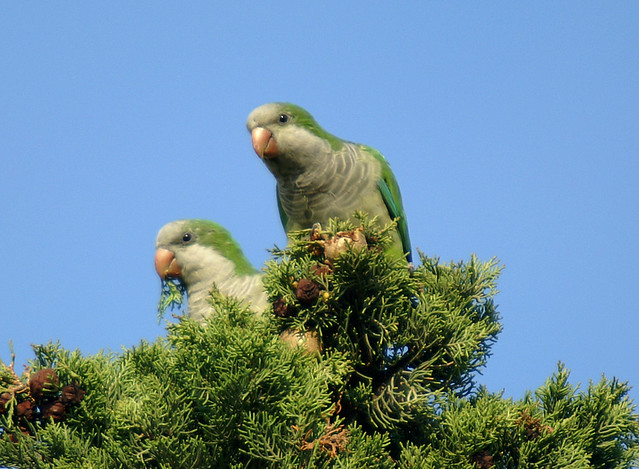
(8) Monk Parakeet — Also called the Quaker Parakeet (Myiopsitta monachus), is a species of parrot, this colorful little bird is actually a small parrot. They are known for being very clever and social, developing large vocabularies of phrases and words. in most treatments the only member of the genus Myiopsitta. It originates from the temperate to subtropical areas of Argentina and the surrounding countries in South America. Self-sustaining feral populations occur in many places, mainly in North America and Europe.
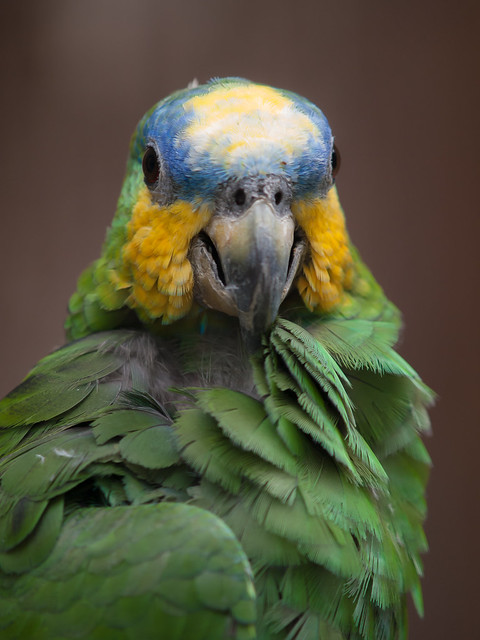
(7) Blue-Fronted Amazon — If you want a companion for life, this is a good fit. The Blue-Fronted can live for up to 100 years, or more. They have an excellent speaking voice, with a strong ability to mimic human voices. The Blue-fronted Amazon (Amazona aestiva), also called the Turquoise-fronted Amazon and Blue-fronted Parrot, is a South American species of Amazon parrot and one of the most common Amazon parrots kept in captivity as a pet or companion parrot. Its common name is derived from the distinctive blue marking on its head just above its beak. The Blue-fronted Amazon is a mainly green parrot about 38 cm (15 in) long. They have blue feathers on the forehead above the beak and yellow on the face and crown. Distribution of blue and yellow varies greatly among individuals. Unlike most other Amazona parrots, its beak is mostly black. There is no overt sexual dimorphism in plumage to the human eye, but analysis of the feathers using spectrometry, a method which allows the plumage to be seen as it would be by a parrot's tetrachromatic vision, shows clear differences between the plumage of the sexes. Juveniles of parrots are duller and have dark irises. Source: Article
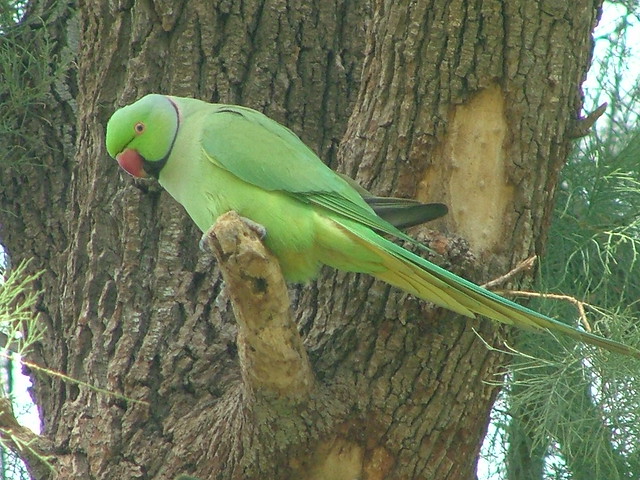
(6) Indian Ringneck — Very clever little birds, Indian Ringnecks (Psittacula krameri), also known as the Ring-necked Parakeet, can develop a large vocabulary, and speak very clearly in sentences. Not so much for mimicking the pitch of a human voice, they more often speak in their own bird voices, though they can carry the mood of the phrase. It is a gregarious tropical Afro-Asian parakeet species that has an extremely large range. Since the trend of the population appears to be increasing, the species was evaluated as Least Concern by IUCN in 2012.Rose-ringed parakeets are popular as pets. Its scientific name commemorates the Austrian naturalist Wilhelm Heinrich Kramer.This non-migrating species is one of few parrot species that have successfully adapted to living in 'disturbed habitats', and in that way withstood the onslaught of urbanisation and deforestation. In the wild, this is a noisy species with an unmistakable squawking call. Source: Article
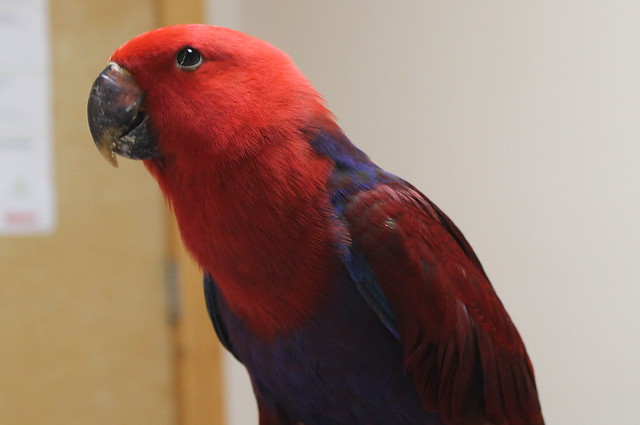
(5) Eclectus —The Eclectus Parrot (Eclectus roratus) is a parrot native to the Solomon Islands, Sumba, New Guinea and nearby islands, northeastern Australia and the Maluku Islands (Moluccas). this parrot is able to verbalize distinctly and mimic the tone and mood of language. While its capabilities are strong, these abilities depend entirely on training from an early age. It is unusual in the parrot family for its extreme sexual dimorphism of the colours of the plumage; the male having a mostly bright emerald green plumage and the female a mostly bright red and purple/blue plumage. Joseph Forshaw, in his book Parrots of the World, noted that the first European ornithologists to see Eclectus Parrots thought they were of two distinct species. Large populations of this parrot remain, and they are sometimes considered pests for eating fruit off trees. Some populations restricted to relatively small islands are comparably rare. Their bright feathers are also used by native tribes people in New Guinea as decorations. Source: Article
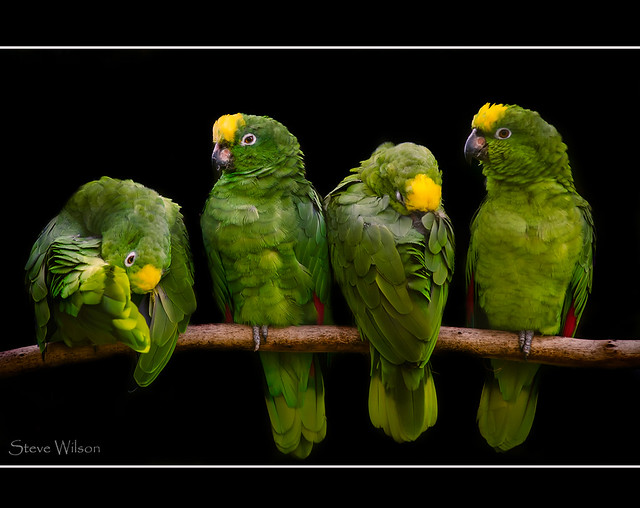
(4) Yellow-Crowned Amazon — Considered to be nearly as good as the Yellow-Naped, with less of a tendency to nip. The Yellow-crowned Amazon or Yellow-crowned Parrot (Amazona ochrocephala), is a species of parrot, native to the tropical South America and Panama. The taxonomy is highly complex, and the Yellow-headed (A. oratrix) and Yellow-naped Amazon (A. auropalliata) are sometimes considered subspecies of the Yellow-crowned Amazon. have a total length of 33–38 cm (13–15 in). As most other Amazon parrots, it has a short squarish tail and a primarily green plumage. It has dark blue tips to the secondaries and primaries, and a red wing speculum, carpal edge (leading edge of the wing at the "shoulder") and base of the outer tail-feathers. The red and dark blue sections are often difficult to see when the bird is perched, while the red base of the outer tail-feathers only infrequently can be seen under normal viewing conditions in the wild. The amount of yellow to the head varies, with nominate, nattereri and panamensis having yellow restricted to the crown-region (occasionally with a few random feathers around the eyes, while the subspeciesxantholaema has most of the head yellow. All have a white eye-ring. They have a dark bill with a large horn or reddish spot on the upper mandible except panamensis, which has a horn coloured beak. Males and females do not differ in plumage. Except for the wing speculum, juveniles have little yellow and red to the plumage. Source: Article
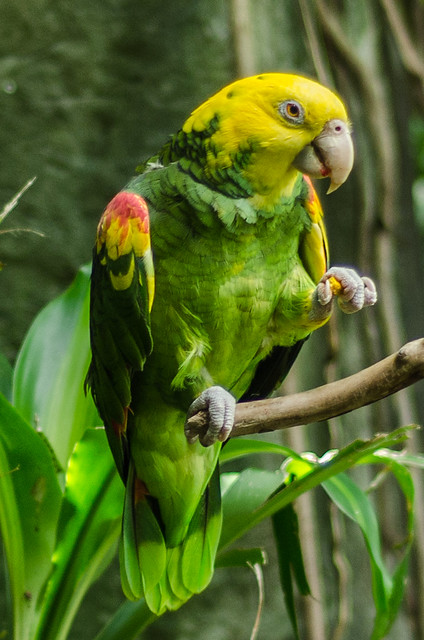
(3) Double Yellow Head Amazon — The Yellow-headed Amazon (Amazona oratrix), also known as the Yellow-headed Parrot and Double Yellow-headed Amazon, is an endangered amazon parrot of Mexico and northern Central America. Measuring 38–43 centimetres (15–17 in) in length, it is a stocky short-tailed green parrot with a yellow head. It prefers to live in mangrove forests or forests near rivers or other bodies of water. It is sometimes considered a subspecies of the Yellow-crowned Amazon. It is a popular pet and an excellent talker. Source: Article
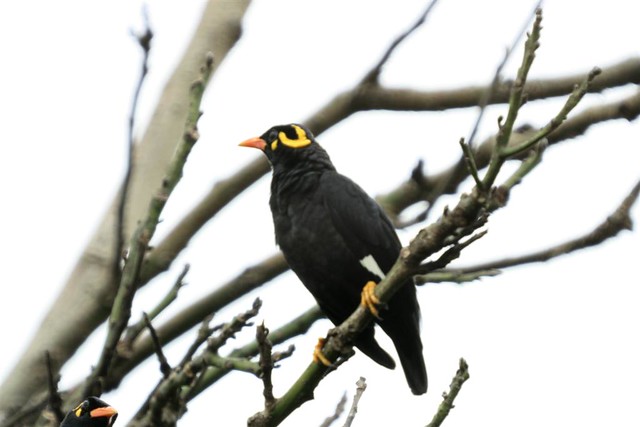
they do speaking. These species were not included. (9) Budgerigar — The budgerigar (Melopsittacus undulatus), also known as common pet parakeet or shell parakeet and informally nicknamed the budgie, is a small, long-tailed, seed-eating parrot. Their voice tends to be low and not always defined, and males tend to train better than females. Budgerigars are the only species in the Australian genus Melopsittacus, and are found wild throughout the drier parts of Australia where the species has survived harsh inland conditions for the last five million years.Budgerigars are naturally green and yellow with black, scalloped markings on the nape, back, and wings, but have been bred in captivity with colouring in blues, whites, yellows, greys, and even with small crests. Budgerigars are popular pets around the world due to their small size, low cost, and ability to mimic human speech. The origin of the budgerigar's name is unclear. The species was first recorded in 1805, and today is the most popular pet in the world after the domesticated dog and cat. The budgerigar is closely related to the lories and the fig parrots. They are one of the parakeet species, a non-taxonomical term that refers to any of a number of small parrots with long, flat and tapered tails. In both captivity and the wild, budgerigars breed opportunistically and in pairs. Source: Article.

(8) Monk Parakeet — Also called the Quaker Parakeet (Myiopsitta monachus), is a species of parrot, this colorful little bird is actually a small parrot. They are known for being very clever and social, developing large vocabularies of phrases and words. in most treatments the only member of the genus Myiopsitta. It originates from the temperate to subtropical areas of Argentina and the surrounding countries in South America. Self-sustaining feral populations occur in many places, mainly in North America and Europe.

(7) Blue-Fronted Amazon — If you want a companion for life, this is a good fit. The Blue-Fronted can live for up to 100 years, or more. They have an excellent speaking voice, with a strong ability to mimic human voices. The Blue-fronted Amazon (Amazona aestiva), also called the Turquoise-fronted Amazon and Blue-fronted Parrot, is a South American species of Amazon parrot and one of the most common Amazon parrots kept in captivity as a pet or companion parrot. Its common name is derived from the distinctive blue marking on its head just above its beak. The Blue-fronted Amazon is a mainly green parrot about 38 cm (15 in) long. They have blue feathers on the forehead above the beak and yellow on the face and crown. Distribution of blue and yellow varies greatly among individuals. Unlike most other Amazona parrots, its beak is mostly black. There is no overt sexual dimorphism in plumage to the human eye, but analysis of the feathers using spectrometry, a method which allows the plumage to be seen as it would be by a parrot's tetrachromatic vision, shows clear differences between the plumage of the sexes. Juveniles of parrots are duller and have dark irises. Source: Article

(6) Indian Ringneck — Very clever little birds, Indian Ringnecks (Psittacula krameri), also known as the Ring-necked Parakeet, can develop a large vocabulary, and speak very clearly in sentences. Not so much for mimicking the pitch of a human voice, they more often speak in their own bird voices, though they can carry the mood of the phrase. It is a gregarious tropical Afro-Asian parakeet species that has an extremely large range. Since the trend of the population appears to be increasing, the species was evaluated as Least Concern by IUCN in 2012.Rose-ringed parakeets are popular as pets. Its scientific name commemorates the Austrian naturalist Wilhelm Heinrich Kramer.This non-migrating species is one of few parrot species that have successfully adapted to living in 'disturbed habitats', and in that way withstood the onslaught of urbanisation and deforestation. In the wild, this is a noisy species with an unmistakable squawking call. Source: Article

(5) Eclectus —The Eclectus Parrot (Eclectus roratus) is a parrot native to the Solomon Islands, Sumba, New Guinea and nearby islands, northeastern Australia and the Maluku Islands (Moluccas). this parrot is able to verbalize distinctly and mimic the tone and mood of language. While its capabilities are strong, these abilities depend entirely on training from an early age. It is unusual in the parrot family for its extreme sexual dimorphism of the colours of the plumage; the male having a mostly bright emerald green plumage and the female a mostly bright red and purple/blue plumage. Joseph Forshaw, in his book Parrots of the World, noted that the first European ornithologists to see Eclectus Parrots thought they were of two distinct species. Large populations of this parrot remain, and they are sometimes considered pests for eating fruit off trees. Some populations restricted to relatively small islands are comparably rare. Their bright feathers are also used by native tribes people in New Guinea as decorations. Source: Article

(4) Yellow-Crowned Amazon — Considered to be nearly as good as the Yellow-Naped, with less of a tendency to nip. The Yellow-crowned Amazon or Yellow-crowned Parrot (Amazona ochrocephala), is a species of parrot, native to the tropical South America and Panama. The taxonomy is highly complex, and the Yellow-headed (A. oratrix) and Yellow-naped Amazon (A. auropalliata) are sometimes considered subspecies of the Yellow-crowned Amazon. have a total length of 33–38 cm (13–15 in). As most other Amazon parrots, it has a short squarish tail and a primarily green plumage. It has dark blue tips to the secondaries and primaries, and a red wing speculum, carpal edge (leading edge of the wing at the "shoulder") and base of the outer tail-feathers. The red and dark blue sections are often difficult to see when the bird is perched, while the red base of the outer tail-feathers only infrequently can be seen under normal viewing conditions in the wild. The amount of yellow to the head varies, with nominate, nattereri and panamensis having yellow restricted to the crown-region (occasionally with a few random feathers around the eyes, while the subspeciesxantholaema has most of the head yellow. All have a white eye-ring. They have a dark bill with a large horn or reddish spot on the upper mandible except panamensis, which has a horn coloured beak. Males and females do not differ in plumage. Except for the wing speculum, juveniles have little yellow and red to the plumage. Source: Article

(3) Double Yellow Head Amazon — The Yellow-headed Amazon (Amazona oratrix), also known as the Yellow-headed Parrot and Double Yellow-headed Amazon, is an endangered amazon parrot of Mexico and northern Central America. Measuring 38–43 centimetres (15–17 in) in length, it is a stocky short-tailed green parrot with a yellow head. It prefers to live in mangrove forests or forests near rivers or other bodies of water. It is sometimes considered a subspecies of the Yellow-crowned Amazon. It is a popular pet and an excellent talker. Source: Article

(2) Hill Myna — This pretty little black bird has an amazing capacity for mimicking human voices, with a varied range of pitch and tonality. The common hill myna (Gracula religiosa), sometimes spelled "mynah" and formerly simply known as hill myna, is the myna bird most commonly seen in aviculture, where it is often simply referred to by the latter two names. It is a member of the starling family (Sturnidae), resident in hill regions of South Asia and Southeast Asia. The Sri Lanka hill myna, a former subspecies of G. religiosa, is generally accepted as a separate species G. ptilogenys nowadays. The Enggano hill myna (G. enganensis) and Nias hill myna (G. robusta) are also widely accepted as specifically distinct, and many authors favor treating the southern hill myna (G. r. indica) from the Nilgiris and elsewhere in the Western Ghats of India as a separate species, also. Source: Article
(1) African Grey — The African Grey is widely considered to be the smartest of the talking birds, and one of the most intelligent in the animal kingdom overall. Some experts say they approach the ability to speak and relate concepts on the level of a human toddler. Of the two standard "domesticated" species, the Timneh African Grey tends to learn to speak at a younger age than the Congo African Grey. The African Grey Parrot (Psittacus erithacus), also known as the Grey Parrot, is a parrot found in the primary and secondary rainforest of West and Central Africa. Experts regard it as one of the most intelligent birds in the world. They feed primarily on palm nuts, seeds, fruits, and leafy matter, but have also been observed eating snails. Their overall gentle nature and their inclination and ability to mimic speech have made them popular pets, which has led many to be captured from the wild and sold into the pet trade. The African Grey Parrot is listed on CITES appendix II, which restricts trade of wild-caught species because wild populations cannot sustain trapping for the pet trade. Source: Articl-1-2, Images: flickr.com
(1) African Grey — The African Grey is widely considered to be the smartest of the talking birds, and one of the most intelligent in the animal kingdom overall. Some experts say they approach the ability to speak and relate concepts on the level of a human toddler. Of the two standard "domesticated" species, the Timneh African Grey tends to learn to speak at a younger age than the Congo African Grey. The African Grey Parrot (Psittacus erithacus), also known as the Grey Parrot, is a parrot found in the primary and secondary rainforest of West and Central Africa. Experts regard it as one of the most intelligent birds in the world. They feed primarily on palm nuts, seeds, fruits, and leafy matter, but have also been observed eating snails. Their overall gentle nature and their inclination and ability to mimic speech have made them popular pets, which has led many to be captured from the wild and sold into the pet trade. The African Grey Parrot is listed on CITES appendix II, which restricts trade of wild-caught species because wild populations cannot sustain trapping for the pet trade. Source: Articl-1-2, Images: flickr.com
Revolutionary “green” supersonic aircraft unveiled
Yet another green project at last week’s Paris Airshow shows how the industry’s attention is shifting towards becoming more efficient and bringing down emissions. HyperMach presented a large-scale model of its ground-breaking new supersonic business jet, SonicStar, which it hopes to roll out within 10 years. For years, innovation in supersonic technology has been curbed by understandably stringent regulations on the level of aircraft noise permitted over land. But SonicStar uses innovative technology to allow control of aerodynamics leading to actively eliminating the problem of sonic boom at very high speeds. To make unprecedented travel times a reality, speed is, quite literally, of the essence. But with climate change a pressing global concern, HyperMach have put revolutionary green engine technology at the heart of SonicStar’s development. This next generation hybrid electric gas turbine engine which has been in development for seven years at SonicBlue provides the power generation capability to reduce jet emissions by 100%, increase thrust to weight ratio by 20% and reduce parts count in core engine components by 40%. No sonic boom despite going at three times speed of sound As well as curbing emissions and boosting efficiency, SonicStar will achieve the speed of Mach 3.5, while dramatically reducing sonic boom overland. “You’ll be able to fly supersonic from New York to Sydney in five hours with no sonic boom overland – changing the way in which the world does business….. forever,” explains HyperMach. Richard Lugg, HyperMach’s Chairman commented during the unveiling in Paris: “I’ve made it my life’s work to make this dream a reality. Now, in 2011, we have access to revolutionary engine technology, and a unique, very high speed aircraft design to make this kind of earth-shatteringly fast air travel possible.” The propulsion system for SonicStar is a new Hybrid engine, S-MAGJET 4000X designed by HyperMach’s engine partner SonicBlue. It is over 30% more fuel efficient then the Rolls Royce 593 Engine in Concorde. This is record breaking technology for a supersonic engine design. The 54,700 thrust class S-MAGJET engine is optimized to fly the HyperMach SonicStar aircraft at 62,000 ft, at a specific fuel consumption below 1.05 at Mach 3.5, this performance will be unprecedented and will welcome in a new era of the future of aerospace transport. HyperMach reveals that the engine technology will be developed and built in the UK and are currently in discussions with potential engine partners for the manufacture of the engine. The UK Department of Trade and Industry have agreed to support the company in the UK, as it establishes and grows the strategic Global Headquarters for the commercial engine development and manufacture of S-MAGJET 4000X. The UK’s Global Entrepreneur Programme is key to attracting some of the world’s most significant breakthrough technologies to the UK, creating the next generation of high growth sustainable global technology companies, and is involved in this new project. “We will be working with Richard Lugg and his company to explore ways for the SonicBlue engine, HyperMach and SonicStar to take advantage of the UK’s unique, global support infrastructure and network, which will help to establish the business as a dominant company in its field,” reveals Andrew Humphries, Dealmaker for the UK’s Global Entrepreneur Programme. HyperMach is currently working to secure investment and create value in preparation for launch in 2021. For additional information: Source: Renewable Energy Magazine
Subscribe to:
Posts (Atom)




